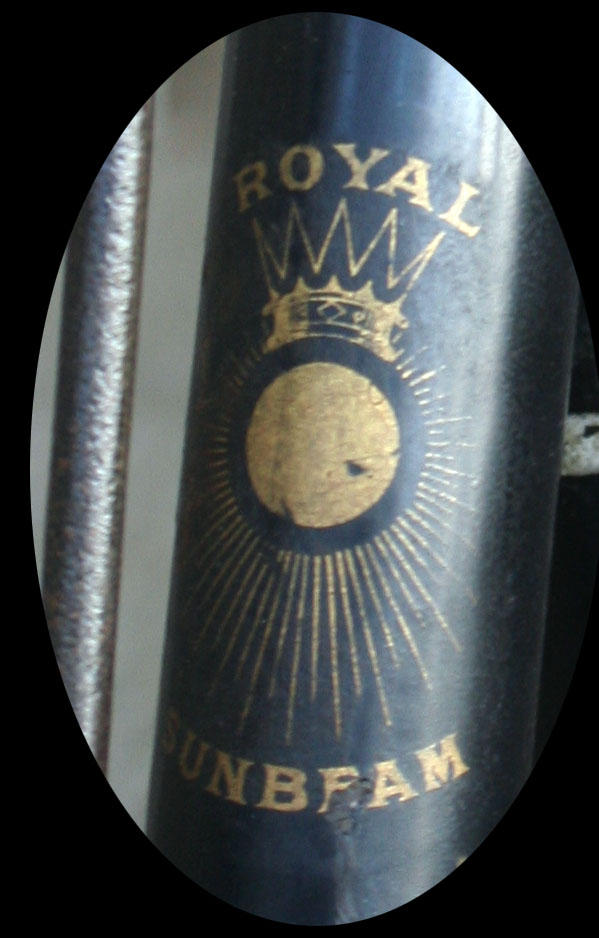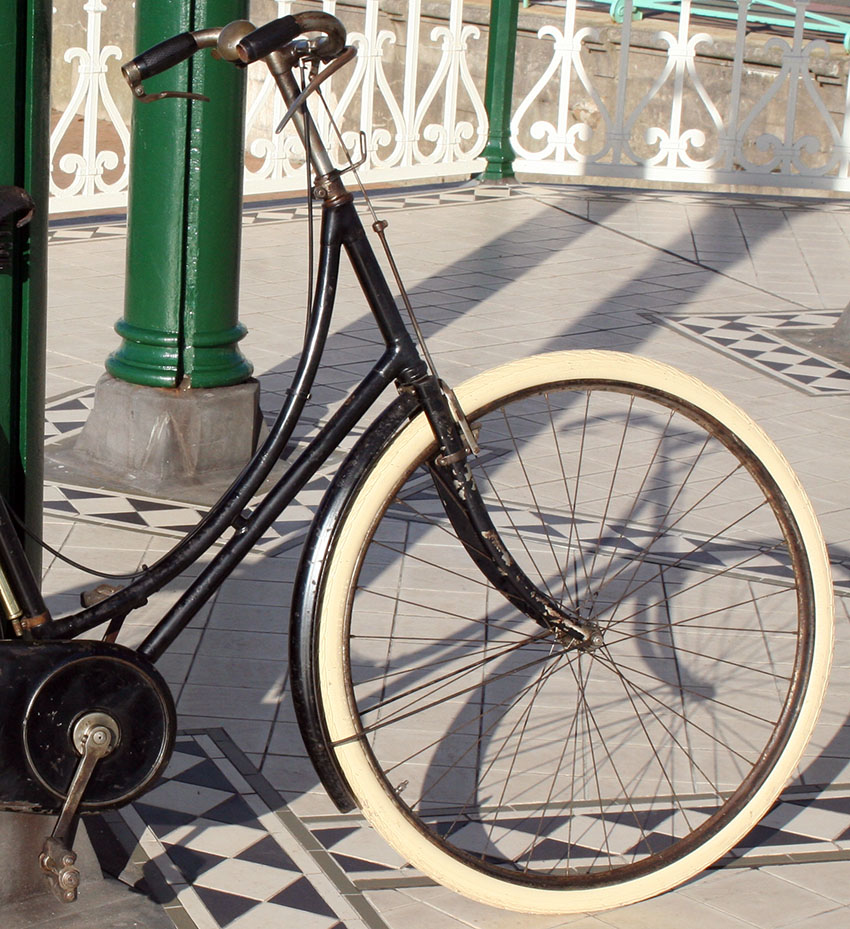

Gilt transfers (decals) are very delicate. Too much polishing by an over-enthusiastic owner is enough to remove them forever. This 1901 Sunbeam is one of the earliest from this famous marque that is known to have survived and, in addition, it has survived in remarkably good condition with all its transfers intact. A 115-year-old bicycle with original paintwork and transfers is the ultimate treasure, akin to cocking a snook at Old Man Time himself.


1901 Royal Sunbeam for Ladies
with Freewheel Little Oil Bath
22″ Frame
28″ Wheels
Frame No 50191
(Now sold)

An interesting feature is the Roller Lever Front Brake & ‘Hand Applied’ (Inverted Lever) Rear Rim Brake.



EXCERPTS FROM THE 1901 SUNBEAM CATALOGUE

This bike has the interesting contrast of brakes and brake levers that seem to have been optional around this time.

1. The front brake is operated by a Roller Lever (on the offside or right hand handlebar). According to the book ‘Sunbeam Cycles’ ‘Marstons and J. Morgan patented a brake lever in 1900 of the type known today as a roller lever.’ It is not known if this was offered in the 1901 catalogue, as a 1901 catalogue is not available. The Thumb Lever type of front brake was offered in 1902, as featured in the catalogue page below: ‘The front brake with a thumb lever was used on the light and cheap machines but a pull-up pattern front brake had been introduced and would soon become the standard fitment.’
2.The rear brake is operated by an Inverted Lever (on the nearside or left hand handlebar). The Ladies Model HRH had an option for Thumb Lever Front Brake combined with ‘Hand Applied’ Rear Band Brake. ‘Hand Applied’ means that it is operated with an inverted lever on the left hand handlebar, which replaced the back-pedal rim brake. According the catalogue page below, this was ‘fitted on our designs O.K and H.R.H. and also, when preferred, on the Royal Sunbeams.’
3. Instead of a Band Brake on the rear, it’s fitted with a cable-operated Rim Brake (see page below).
This combination of Sunbeam brakes and levers appears to be contemporary with the first few years of the 20th century. Sunbeams were one of the top British bicycle and cycle component manufacturers of the time, and these new innovations in brake design would have been available by special order should a customer wish to take advantage of them.




The Royal Lady now has cream tyres. Some of these photos show her when I first became her custodian, in 2009, when she wore her older black tyres.













BROOKS PATENT LADIES’ SADDLES

From the 1901 Brooks catalogue…


















Events of 1901
On 2nd February 1901, Queen Victoria died. Great Britain was engaged in the Boer War. Butch Cassidy and the Sundance Kid held up a train in Wagner, Montana, and escaped with $40,000. Australia declared independence. The first production car named as a Sunbeam was introduced in 1901, after a partnership with Maxwell Maberly-Smith. The design was unusual with seats on either side of a belt-drive powered by a single-cylinder 3 hp engine. (Despite some early experiments with motorized bicycles, Sunbeam did not start making motorcycles until 1912).
When this Ladies Royal Sunbeam was first ridden, roads were still dominated by horses. The speed limit for cars – ‘horseless carriages’ – was 14mph. They were the last few years of ‘motoring innocence.’ But, since its debut at the beginning of the twentieth century, bicycle design has hardly changed. It’s pictured below with an American GT Dyno Mooneyes Cruiser built in 1999, at the close of the century.




PLEASE CLICK HERE
http://sunbeammuseum.wordpress.com/












































